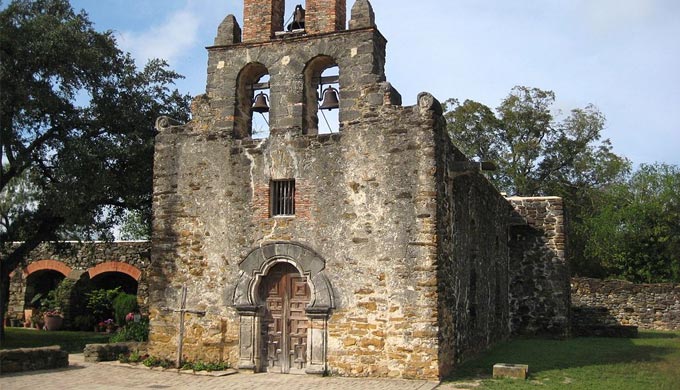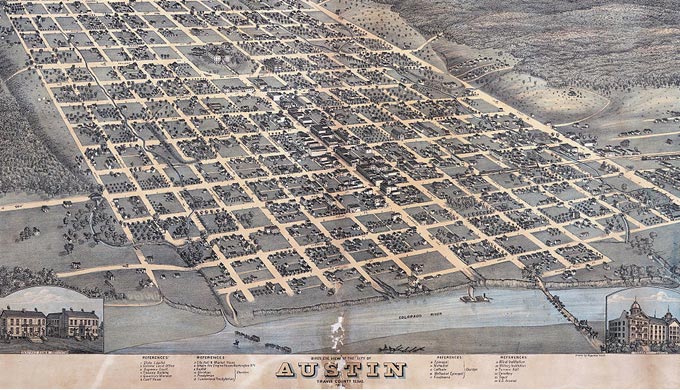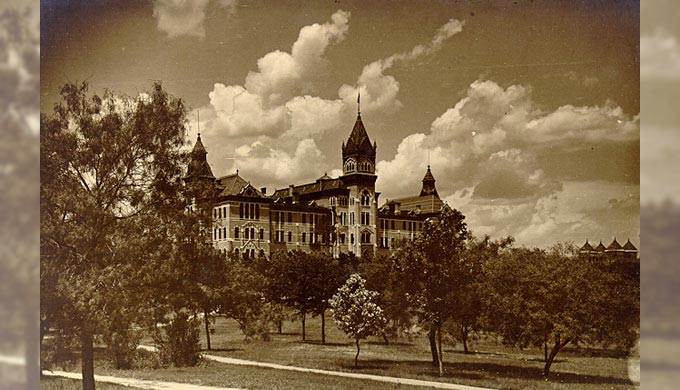Even though it took a little longer for Texas to be settled than other U.S. states, many historical events occurred making the state what it is today.
Of course, we can’t forget the Alamo and the tragic battle that occurred there. But what about just north of that? There, lies the Hill Country, home of the capital of Texas, Austin.
Here are five major historical events that happened in the Texas Hill Country.
1. First European Settlers Arrive in Present-Day Austin, 1730
Photo: Wikipedia
A group of Spanish friars were the first European settlers to inhabit what is now Austin. They arrived from East Texas July 1730. They established three missions by the Colorado near present-day Barton Springs: La Purísima Concepción, San Francisco de los Neches and San José de los Nazonis. Ultimately, the friars found conditions undesirable and relocated to the San Antonio River within a year.
2. Austin Becomes Capital of the Republic of Texas, 1839
Photo: Wikipedia
Before Austin became “Austin,” it was Waterloo. The first documented permanent settlement in Waterloo dates back to 1837 near where Shoal Creek and the Colorado River join. In 1837, the president of the Republic of Texas, Sam Houston, moved the capital to Houston. Before that, five different cities served as temporary capitals. Though by 1839, Waterloo was renamed Austin and the government of the Republic of Texas arrived to the city by oxcart.
3. Texas Archive War, 1842
Photo: Wikipedia
In 1842, an innkeeper known as Anglina Eberly noticed archives being removed from Austin. President of the Republic of Texas Sam Houston had ordered the archives be moved back to Houston after Mexican troops invaded nearby. Eberly ran to a six-pound canon was located on Congress Avenue and fired at the General Land Office. Her actions alerted the town of Houston’s order. The archives were returned to the city by Dec. 31, 1842.
4. A German Prince Settles New Braunfels, 1845
Photo: Wikipedia
Prince Carl of Solms-Braunfels officially established New Braunfels. This came as no easy feat as the prince asked to be removed as Commissioner-General just a year earlier. Apparently, he was disillusioned with logistics in relation to organizing a colony. Though Prince Solms-Braunfels may have officially established New Braunfels, Baron Otfried Hans von Meusebach did the real work. He negotiated with local Native American tribes and organized duties for settling the town.
Read more about Prince Carl of Solms-Braunfels
5. University of Texas Becomes First Major University in South to Admit African-Americans as Undergrads, 1959
Photo: Wikipedia
Race and ethnicity were hot button issues in Texas starting in the ‘50s. Segregation was the first idea to be addressed. Campaigns were waged by local politicians and action groups to desegregate schools and allow equal opportunity. From there, the movement gained momentum as students staged demonstrations to protest segregated movie theaters, lunch counters and restaurants.






